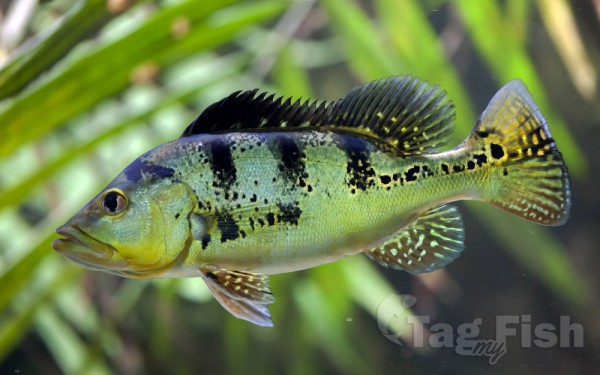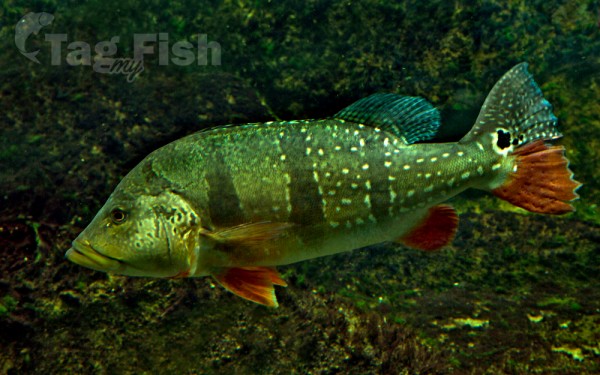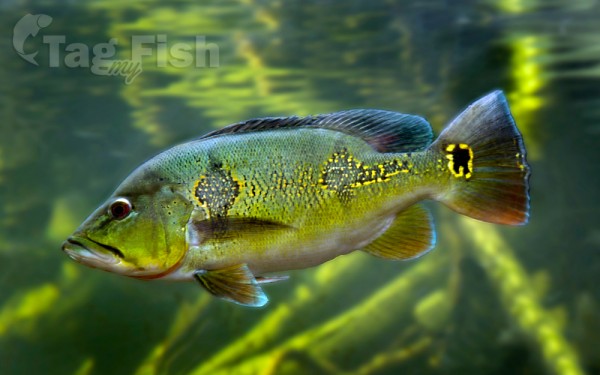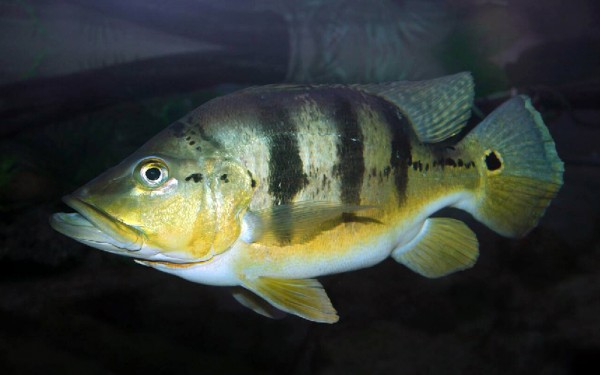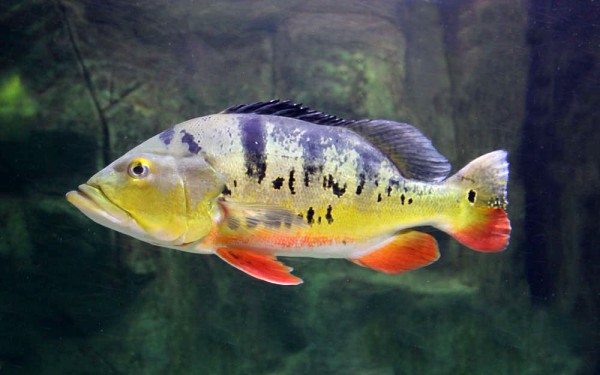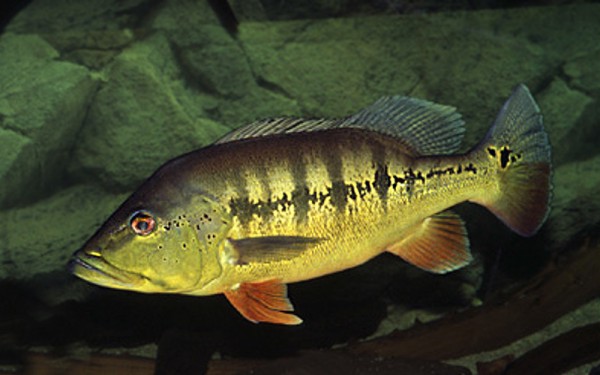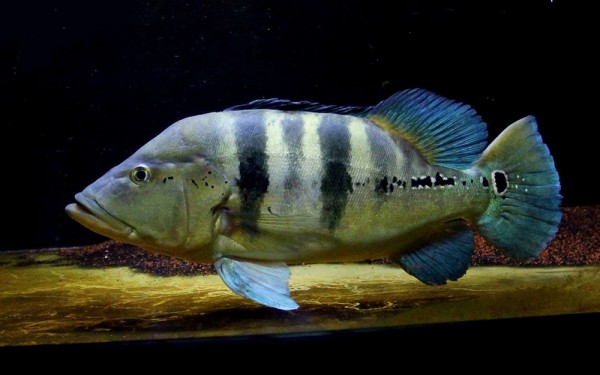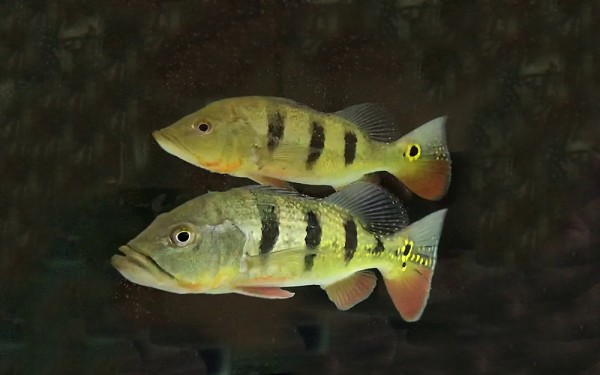Cichla - Peacock cichlids
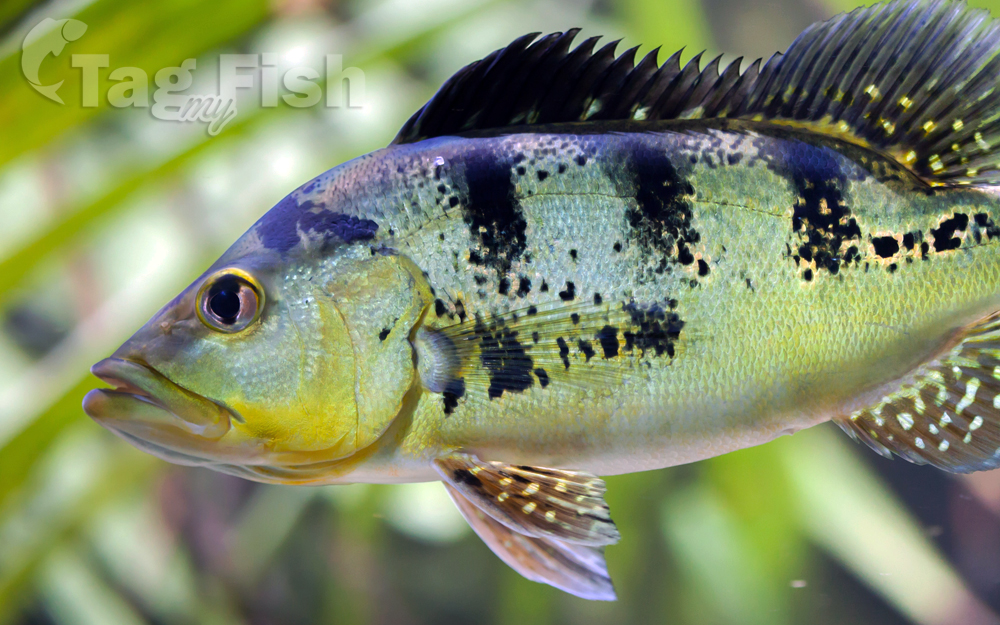
Classification
Description
Peacock bass (or Brazilian tucunaré) (Cichla) is a genus of large cichlids, diurnal and predatory freshwater fish native to the Amazon and Orinoco basins, as well as rivers of the Guianas, in tropical South America.
They are sometimes referred to in English by their Brazilian name tucunaré or their Spanish name pavon. Despite the common name and their superficial similarity, they are not closely related to other fish known as bass, such as the North American largemouth bass (Micropterus salmoides).
Peacock bass are important food fish and also considered game fish. This has resulted in their accidental (escapees from fish farms) or deliberate (release by fishers) introduction to regions outside their native range, both elsewhere in South America, and in warm parts of North America and Asia. Singles have been caught elsewhere, including Australia, but do not appear to have become established there. Where established as an introduced species, they may become invasive and damage the ecosystem because of their highly predatory behavior, feeding extensively on smaller native fish.
The largest species in the genus, the speckled peacock bass (C. temensis), reaches up to 13 kg (29 lb) in weight and 1 m (3.3 ft) in length, possibly making it the largest species of cichlid (others suggest that prize goes to the African giant cichlid, Boulengerochromis microlepis). Other peacock bass species are smaller. They are sometimes kept in aquariums, but even the smaller species require a very large tank.
The genus comprises 15 species recognized by external characters of which color pattern and meristics are most significant.
In six species juveniles possess three dark blotches on the side and a dark band connecting the posterior blotch to the dark blotch at the caudal-fin base: Cichla ocellaris is known from the Guianas, including the Marowijne, Suriname, Corantijn, Demerara, and Essequibo river drainages, and also the upper Rio Branco in Brazil.
Cichla orinocensis is known from the Negro and Orinoco river drainages in Brazil, Colombia, and Venezuela.
Cichla monoculus is widespread in the floodplains of the Amazon basin, in Colombia, Peru, and Brazil, and also collected from rivers of Amapá in Brazil, and the lower Oyapock River on the border between Brazil and French Guiana.
Cichla nigromaculata is known from the upper Rio Orinoco in Venezuela and, tentatively, the middle Rio Negro in Brazil.
Cichla kelberi, new species, is restricted to the Tocantins river basin, but also found transplanted in the Paraná and Paraíba do Sul river drainages and reported from the Nordeste region of Brazil.
Cichla pleiozona, new species, occurs in the Madre de Dios, Beni, and Guaporé river drainages in Bolivia and Brazil, and in the Rio Jamari in Brazil.
A lectotype is fixed for Cychla toucounarai which is a synonym of Cichla monoculus.
Juveniles and young of the remaining nine species, in addition to the three midlateral blotches, possess a dark horizontal band extending from the head to the dark blotch at the caudal-fin base:
Cichla mirianae, new species, is restricted to the upper Tapajós river drainage, in the Juruena and Teles Pires rivers, and the upper Xingu river drainage in Brazil.
Cichla melaniae, new species, is restricted to the lower Xingu river drainage in Brazil.
Cichla piquiti, new species, is restricted to the Tocantins river basin, but transplanted in the Paraná river basin in Brazil and Paraguay.
Cichla thyrorus, new species, occurs in the Rio Trombetas in Brazil, upstream from the Cachoeira Porteira.
Cichla jariina, new species, occurs in the Rio Jari in Brazil, where it is so far recorded only from the region of the Santo Antonio rapids.
Cichla pinima, new species, occurs in the lower parts of southern tributaries of the Rio Amazonas in Brazil (Tapajós, Curuá-Una, Xingu), and the lower Tocantins and Capim rivers. Tentatively identified specimens are recorded from the Amapá, Araguari, and Canumã rivers in Brazil.
Cichla pinima occurs translocated in the Rio Paraguaçu in southeastern Brazil, and is reported as translocated from the northeast of Brazil.
Cichla vazzoleri, new species, occurs in the Uatumã and lower Trombetas rivers in Brazil.
Cichla temensis is known from the Negro and Orinoco river drainages in Brazil, Colombia, and Venezuela. It is also recorded from blackwater rivers along the Rio Solimões-Amazonas in Brazil (Tefé, Rio Puraquequara, Rio Uatumã, and Silves).
Cichla intermedia is restricted to the Casiquiare and Orinoco river drainages in Venezuela.
